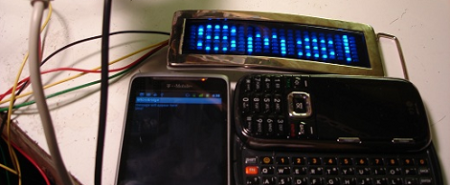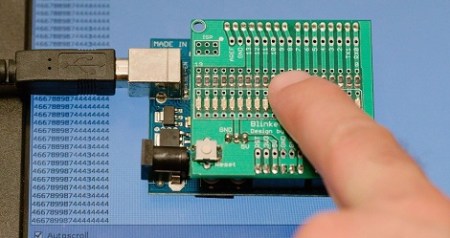
For some ungodly reason, [Scott] has a friend that wanted a ‘sexting themed’ Halloween costume. We won’t try to make any presumptions of the creativity or mental stability of [Scott]’s friend, but the SMS scrolling LED belt buckle he came up with is pretty cool.
The belt is based around a $13 scrolling LED belt buckle [Scott] found online. There was a problem with the belt buckle, though. Thirteen dollars means [Scott] didn’t get a whole lot of features with his buckle, so there are only 3 buttons on the entire device: letter up, letter down, and enter. Instead of pressing a button 80 times to get a lowercase ‘z,’ an Arduino was thrown into the mix to take care of all the button pressing.
The Arduino sketch could now input any message into the belt buckle in a matter of seconds. All that was left to do is taking care of the SMS to text part of the build. For this, [Scott] used the Sparkfun USB Host Shield and a custom Android app. Whenever an SMS is received on the phone, the message is sent through the USB shield to the Arduino and output on the belt buckle.
We won’t make any assumptions about the content of the messages during the Halloween party, but at least the video demo of the build is family friendly. Check it out after the break.














